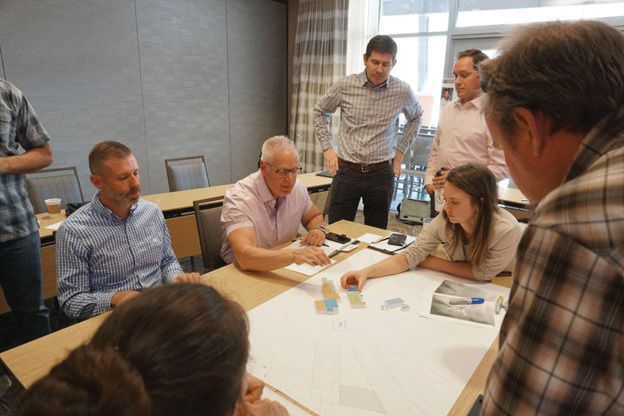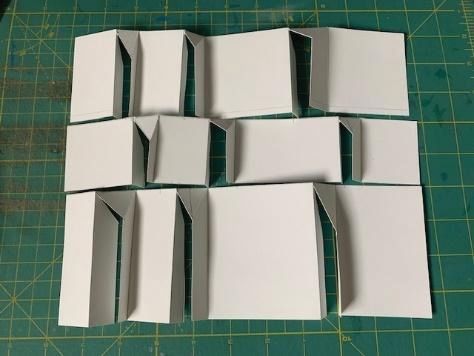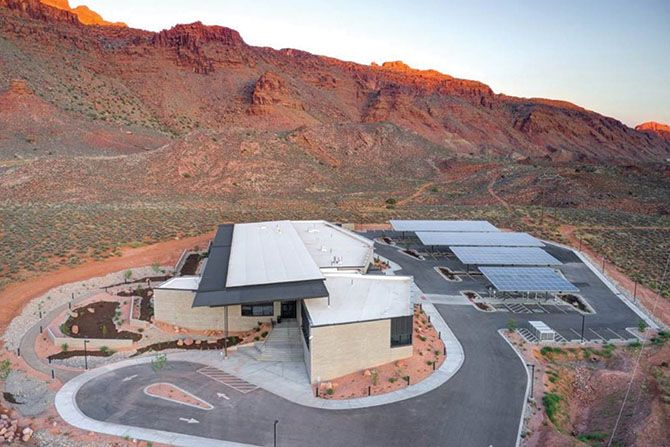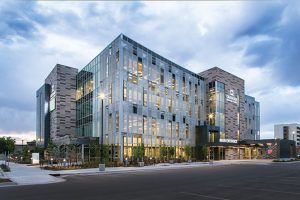Feature Image: USU Moab Academic Building Exterior
- Physiological: A plethora of studies confirm what we intuitively know, that daylight is good for you. Natural light has been found to be superior to artificial light in enabling visual tasks, especially ones that involve fine motor skills and color differentiation. Exposure to daylight is a key factor in regulating sleep and circadian rhythms by regulating melatonin, a hormone that determines a person’s activity and energy levels during the course of a day.
- Biophilic: As we spend more and more time indoors, any opportunity to reconnect with nature becomes more critical. By providing access to daylight in buildings, we promote biophilia, or the innate connection people have to nature and other living things. When paired with natural materials, patterns, colors, and plants, we further strengthen the biophilic effect in a space.
- Mood-Enhancing/Increased Productivity: Access to high-quality daylight has been shown to lessen agitation, improve mood and even ease some pain. Mood changes are likely to affect performance at work and school, suggesting that access to daylight and views directly impacts our ability to perform tasks, retain information, and think creatively. Daylighting has the ability to affect our perception, job satisfaction and, in effect, when used effectively, boost the bottom line.
- Energy-Saving: In addition to all the benefits related to human wellness, strategically utilizing and controlling daylight can reduce reliance on artificial light during the day and save energy.

MHTN Architects working through models during an Integrative Design Workshop for the Utah State University Moab Academic Building.
Materials to Consider
When factoring daylight into a project, the light transmittance, reflectivity, color, texture, and light absorptive qualities of all building materials, not just glass, need to be considered. Building materials interact with daylight in different ways at different times of the day. Materials that interact with light in interesting ways can enhance the presence of daylight in a building. Materials that are responsive to light, such as highly-textured stone, perforated metal, and even translucent glass, can create a dynamic and compelling experience of a building, and their application should be thoughtfully considered during design. Highly reflective materials, however, should be placed appropriately to avoid glare. Glass coatings and tints should be explored and applied judiciously to avoid unnecessary heat gain. Daylighting itself can be treated as a material with all the variation and nuance inherent in controlling natural light.

Physical solar control facade studies


Exterior Aerial Image of Utah State University’s Moab Academic Building, showcasing the roof created to shade the external patio space.

A classroom inside the Academic Building, integrated with floor-to-ceiling windows that allow natural light to flood the learning environment.
In Closing
Daylighting is a critical piece of architecture, and its potential to influence not only the energy performance of our buildings, but the health, well-being, and mood of its occupants is astounding. Architects have a unique responsibility to understand and optimize the ways in which daylight is accessed in buildings. Through a process of integrative design and critical evaluation, we can realize the full potential of light, to the benefit of people.
References
Klepeis, Neil. “The National Human Activity Pattern Survey (NHAPS): A Resource for Assessing Exposure to Environmental Pollutants.” Lawrence Berkeley National Laboratory, 2001. https://indoor.lbl.gov/sites/all/files/lbnl-47713.pdf
Woo May, MacNaughton Piers, Lee Jaewook, Tinianov Brandon, Satish Usha, Boubekri Mohamed. “Access to Daylight and Views Improves Physical and Emotional Wellbeing of Office Workers: A Crossover Study.” Frontiers in Sustainable Cities, Vol. 3. 2021. https://www.frontiersin.org/articles/10.3389/frsc.2021.690055
Joseph, Anjali, Ph.D. “Impact of Light on Outcomes in Healthcare Settings.” The Center for Health Design, 2006. https://www.healthdesign.org/sites/default/files/CHD_Issue_Paper2.pdf
This article was originally published in Building Enclosure magazine on www.BuildingEnclosureOnline.com.






